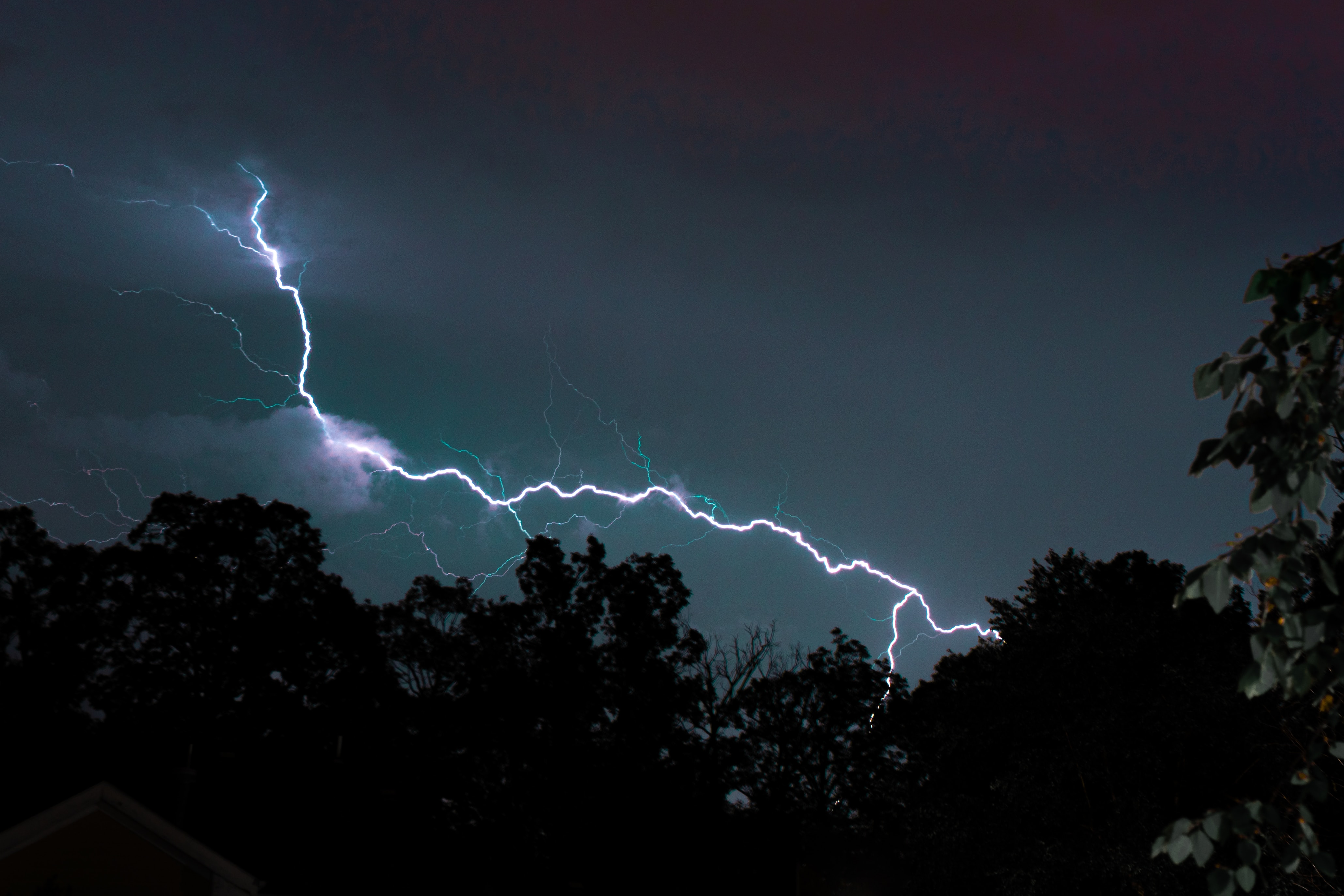Some people enjoy thunderstorms, while for others, it causes health risks. For many pollen allergy sufferers, a spring/summer thunderstorm can lead to Thunderstorm Asthma. In this phenomenon, people with allergic asthma experience increased disease symptoms, such as dry cough, chest tightness, or even shortness of breath, after a thunderstorm.
What happens during thunderstorms?
Warm air transports pollen grains to higher altitudes. Due to the thunderstorm, and the associated strong wind and rain, the pollen is pushed down quickly from higher layers of air. This leads to a high concentration of pollen near the ground. The rapid change in atmospheric conditions, especially humidity, causes the pollen grains to change. Osmotically driven, the pressure in the pole grains increases, which can lead to large-scale bursting. This releases small allergen particles (0.5-2.5µm), of the cytoplasm in the pollen grain, into the ambient air. It is easy for these tiny particles to penetrate the lower airways. This can trigger asthma attacks in hay fever sufferers at best, even if they have never experienced asthma before.
A thunderstorm asthma epidemic in Australia
In 2016, about 8500 people in Australia were affected by Thunderstorm Asthma after a severe thunderstorm. Many had to be hospitalized, and nine people lost their lives. It was a very hot day when temperatures suddenly dropped due to a strong thunderstorm. Paramedics received 1900 calls within 5 hours. Thirty hospitalized patients had to be cared for in the intensive care unit. The whole event had an impact compared to a giant bushfire, as paramedics were working non-stop and hospitals were overflowing.
It was not the first case of Thunderstorm asthma in Melbourne, but the worst, with the most deaths. According to research, patients who had not previously undergone asthma treatment were particularly at risk. In the Melbourne epidemic, between 20 and 40% of those affected had never had asthma before and therefore had not received treatment.
Who is at particular risk?
- Asthmatics with symptom amplification in the spring
- Asthmatics with grass pollen allergy
- Asthmatics with hay fever in spring
- Hay fever allergy sufferers with symptom amplification in spring who have never been diagnosed with asthma.
Accordingly, people who suffer from asthma and hay fever in spring need additional protection to avoid thunderstorm asthma. This is especially true for allergy sufferers in a region with a lot of grass pollen.
What to do during a thunderstorm
For asthmatics with pollen allergies, it is essential to keep track of their symptoms so that they can react immediately if they worsen. In Germany, more people with allergic symptoms seek hospital care when thunderstorms occur during the grass pollen high season. Fortunately, no severe asthmatic reactions have been observed thus far, like in Australia.
Since Thunderstorm asthma attacks usually occur in spring and summer, it is advisable for allergy sufferers to watch for thunderstorms behind closed windows and doors.
Important facts:
- Light rain usually removes pollen from the air. However, the pollen concentration increases quickly at the beginning of a strong thunderstorm.
- Thunderstorm asthma often occurs in spring and summer when there is a high concentration of airborne pollen.
- Pollen allergy sufferers who stay indoors during a thunderstorm are not affected.
- A serious risk exists, especially for people whose asthma is not adequately treated.
- Pollen allergy sufferers without previous asthma experience may experience severe bronchial obstruction (bronchial constriction).
- The risk is very high, especially during a thunderstorm's first 20-30 minutes.
References
- Pollen Foundation: Thunderstorm Asthma Online accessed 3/9/2023 at https://www.pollenstiftung.de
- The Guardian: deaths Thunderstorm asthma. Retrieved online 3/9/2023 https://www.theguardian.com/
- National Asthma Council Australia: people affected: Retrieved online 3/9/2023 from https://www.nationalasthma.org.au
- Pulmonary Physicians on the Net: Thunderstorm Asthma: Retrieved online 3/9/2022 from https://www.lungenaerzte-im-netz.de
- German Green Cross: What to do: Retrieved online 3/9/2023: https://dgk.de
Debora Thaler
Marketing Coordinator


